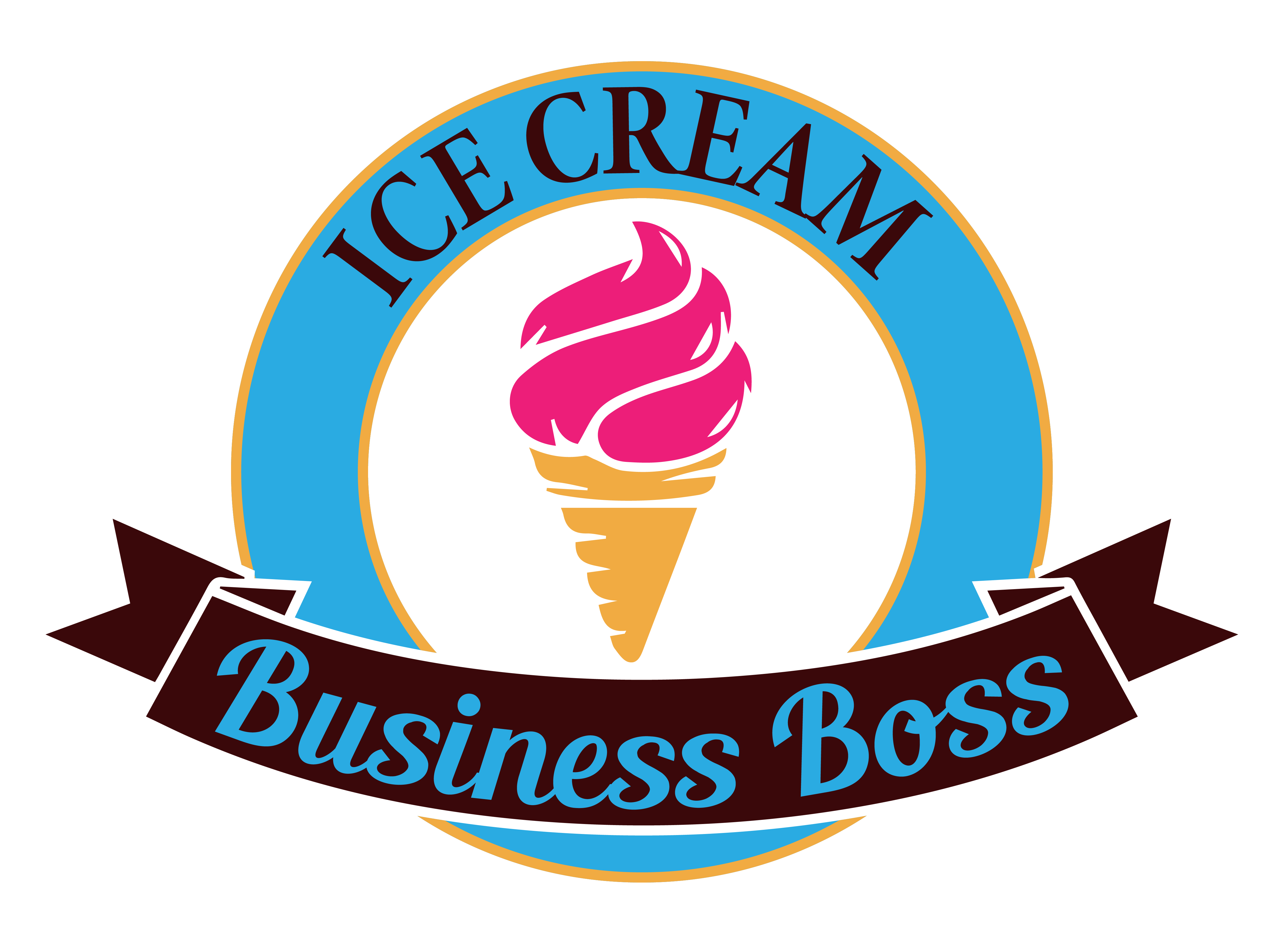Starting your own ice cream business is a tempting enterprise that promises both delicious rewards and unusual challenges. While the notion of serving up scrumptious frozen delights may pique your entrepreneurial spirit, it’s critical to grasp the financial picture that comes with it. The initial cost of an ice cream business is a significant aspect that can make or break your hopes of becoming an effective ice cream entrepreneur.
The most useful information for planning is knowing that the startup cost for an ice cream business can vary, with expenses typically falling between $50,000 to $200,000. The final amount depends on factors like location, store size, equipment, and whether it’s a mobile or brick-and-mortar operation.
In this article, we’ll delve deep into the realm of ice cream business launch costs, finding the factors that drive them and sharing helpful insights to help you plan your financial roadmap effectively. So, let us scoop out the crucial information you need to know about the ice cream business’s beginning costs and set you on a route to creamy prosperity.
Location, Location, Location
Like many other businesses, the growth of an ice cream shop is closely related to the proverb “Location, location, location.” One of the most important criteria in determining initial expenses and possible future profits for an ice cream shop is its location. We will examine the strategic and financial consequences of location in the ice cream industry in this essay as we delve into its significance.
First and foremost, it’s crucial to understand that not all ice cream shops are located in the same places. The location of the business can have a big impact on both the initial costs and ongoing profits. Let’s look more closely at this.
The price of renting or buying a great site can be significantly more expensive in densely populated urban regions or well-known tourist locations than it is in suburban or rural settings. Consider a tiny ice cream shop in the middle of a busy downtown district.
Entrepreneurs might need to make a sizable upfront investment in leasing or property charges to land such a sought-after location. This cost can be astronomical in major cities like New York, London, or Tokyo, frequently reaching hundreds of thousands or even millions of dollars. For ambitious ice cream entrepreneurs, this high entrance barrier might be a major obstacle.
Although the initial costs of good sites may be high, there is also a far higher chance of making money. Popular metropolitan or tourist districts might see heavy foot traffic, which brings in a consistent supply of clients. The accessibility and exposure of such places may result in solid customer loyalty and brand recognition, both of which are priceless assets for any firm.
On the other hand, opening a business in a less crowded suburban or rural location can be substantially less expensive. There may be less competition, and lease or property expenses are typically lower. For business owners with limited start-up funds or those who want to do a trial run before expanding into more pricey urban areas, this can be a compelling alternative.
Lower costs, meanwhile, can also mean lower potential revenue. A smaller client base and a lower frequency of visits to an ice cream shop may be found in suburban or rural locations as opposed to a busy city center. Entrepreneurs need to carefully consider if the lower costs outweigh any potential income constraints in these areas.
Zoning laws and permits should be taken into account while picking a location for an ice cream shop. The location and operation of enterprises like ice cream parlors may be regulated by local zoning laws. To maintain compliance, business owners must traverse these rules, which can raise the overall launch cost.
The right site must also take accessibility and visibility into account. No matter how good the ice cream is, a location that is difficult to find or has poor signage may have trouble drawing consumers. Extra expenses may be incurred in marketing and advertising campaigns to make up for a less-than-perfect location.
Size Matters

A crucial factor that can have a big impact on your launch costs and the viability of your business is the size of your ice cream shop. In addition to considering square footage, you need also consider the atmosphere, capacity, and customer experience you wish to provide. We’ll look at how the size of your ice cream business may affect your costs in this post, along with the significance of striking the correct balance between your vision and your spending plan.
The size of your establishment should be one of your first considerations when launching an ice cream business. Do you picture a small, pleasant ice cream shop where patrons may simply grab a cone and leave? Or are you going for a large, welcoming dessert destination with space for special events, lots of dining, and kid-friendly play areas? Each of these choices has a special set of chances and difficulties.
The size of your ice cream business will, first and foremost, have a big impact on your construction or renting expenditures. Expenses for building or leasing a larger location will certainly be more expensive. A large ice cream store in a desirable location may have hefty rent requirements that could eat up a sizable chunk of your startup funds. A smaller shop, on the other hand, might enable you to reduce these overhead expenses, making it a more financially viable choice, especially for business owners with limited resources.
In addition to rent, you need to take into account the expenditures of furnishing and decorating your ice cream parlor. A bigger area will require more furniture, decor, and seats to make it feel cozy. To handle a larger number of customers and keep the caliber of your goods high, you could need additional equipment. A larger storage and processing room might be necessary if you intend to provide a broad variety of ice cream flavors and toppings.
Another significant element closely related to the size of your ice cream shop is personnel expenditures. To manage customer orders, uphold cleanliness, and deliver superior service in a larger space, additional workers are frequently needed. Your budget could be greatly impacted by the hiring and training of new personnel. However, by reducing wait times and making sure that clients are attended to promptly, a larger team can also assist you in providing a better customer experience.
Even though a larger ice cream parlor may have more seats and possibly draw larger crowds of customers, it’s crucial to strike a balance between your goals and your available resources. Spending excessively on space can limit your resources and leave you with little money for other crucial facets of your ice cream business, like marketing, inventory, and quality assurance.
A small ice cream shop may have reduced overhead expenses and need fewer employees, making it a more financially viable option, especially for first-time business owners. However, you must make sure that the shop’s size corresponds with your target audience and the type of customer service you want to offer. It’s critical to find the ideal balance that not only suits your wants and tastes but also your budget as well as those of your potential clients.
Equipment and Supplies

The caliber and kind of equipment you select can make or destroy your business in the world of ice cream. Since ice cream is a specialty product, a sizable percentage of your initial costs will go toward the equipment needed to make and serve it. To produce a delicious and consistent product for your customers, the proper equipment—from ice cream makers to freezers, display cases to storage facilities—is crucial. This article will examine the importance of equipment in the ice cream industry, the factors that affect its price, and how the sort of ice cream you intend to serve can affect your choice.
The ice cream machines are the brains of any ice cream shop. These devices are in charge of churning and freezing the ice cream mixture to get that coveted creamy texture. Ice cream makers can range widely in price depending on their capacity, brand, and quality. Entry-level models could be more affordable, but they might sacrifice consistency and final product quality.
On the other hand, high-end machines cost more money but provide more control over the freezing process and can result in a better product. Since the performance of the equipment directly affects the flavor and texture of your ice cream, finding the ideal balance between your budget and the equipment’s quality is essential.
Another crucial piece of equipment in any ice cream parlor is a freezer. They are essential for keeping your ice cream at the right temperature to preserve its flavor and freshness. Size, features, and energy efficiency can all affect a freezer’s price. Larger storage freezers are needed to maintain the proper temperature for your product, while smaller display freezers for presenting your ice cream flavors are a need. Despite their higher initial cost, buying energy-efficient freezers can help you save money on ongoing operating expenses.
Another essential piece of equipment for an ice cream shop is display cases. In addition to showcasing your ice cream flavors, these cases are essential for drawing customers because of their eye-catching design. The price of display cases might change depending on factors including size, style, and cooling capacity. An attractive and well-kept display case can draw clients and improve their overall experience, thereby increasing sales.
Facilities for keeping components and completed goods are necessary. The scope of your business will determine the size and capacity of your storage facility. Maintaining ingredient freshness and making sure you have enough stock to fulfill consumer demand depend on proper storage. Effective storage facilities are crucial to the proper operation of your business, even though they are less obvious to customers than other equipment.
The equipment you’ll need can be greatly influenced by the kind of ice cream you intend to serve. Different equipment could be needed for gelato, soft-serve, and conventionally scooped ice cream. Soft-serve machines, for instance, contain unique features for creating the distinctive swirl and texture of soft-serve ice cream.
Gelato producers frequently employ batch freezers, which churn the mixture more slowly and produce a denser, creamier final product. To produce your ice cream, you’ll need extra supplies like batch freezers and pasteurizers. These devices are necessary for heating, blending, and freezing the base mixture, allowing you total control over the flavor and consistency of your ice cream.
Explore the world in inventory costs of your ice cream business by checking out this article here.
Mobile or Brick-and-Mortar?

A crucial choice that can significantly affect your initial costs and the nature of your ice cream business is whether to operate as a mobile ice cream vendor or open a brick-and-mortar location. Making the appropriate choice is crucial for the long-term productivity of your business because each alternative has a different set of costs and factors to take into account. This article will assist you in making this important choice by delving into the variables that affect the costs related to both mobile and brick-and-mortar ice cream operations.
Due to their adaptability and relatively modest initial investment needs, mobile ice cream setups like food trucks and ice cream carts have grown in popularity in recent years. Your initial expenditures are typically lower when choosing a mobile ice cream business than they are when opening a traditional location. The main expenditures connected with mobile setups are the purchase or renting of an appropriate vehicle, licenses, and permits for mobile vending, and mobility-related operational costs.
The flexibility of a mobile ice cream business is one of its most important benefits. You are free to travel around and market to diverse customer bases and events. If you wish to take part in regional fairs, festivals, or private events, this mobility may be especially helpful because it will enable you to reach a wider market and increase your earning potential. It’s important to remember that mobility has its costs, such as fuel, car maintenance, and insurance.
Another cost to take into account while operating a mobile ice cream shop is permits and licensing. You might need to get different permissions, health certifications, and vendor licenses depending on your location and the rules in place. It’s important to investigate and budget for the essential legalities because these requirements might differ greatly from one place to another.
A physical ice cream business, on the other hand, has its own set of costs. Costs associated with interior design, furnishing, signage, and the lease or purchase of the site are involved in opening a physical storefront. A brick-and-mortar establishment may require a far larger initial expenditure than a mobile setup. A sizeable chunk of your beginning budget may be consumed by the high rent or property costs associated with prime locations in well-heeled neighborhoods.
A physical ice cream business has several benefits, including visibility and convenience. Customers can locate you simply and develop brand loyalty when you have a set presence. You can design an exceptional setting for your clients that will enhance their overall experience and promote return visits. Investments in interior design, furnishings, and signage can contribute to the creation of a warm and memorable environment, which can be a potent weapon for luring and keeping consumers.
Your budget, business objectives, and target market should be taken into consideration while choosing between a mobile and brick-and-mortar ice cream shop. A mobile arrangement can be the best option if you have low resources and value flexibility. On the other hand, a physical storefront might be the best option if you want to have a consistent and eye-catching presence. It is crucial to carefully weigh the benefits and drawbacks of each alternative, as well as to analyze your budget and long-term business strategy.
Frequently Asked Questions
How much does it typically cost to establish an ice cream business?
The costs of starting an ice cream business vary, but they often range between $50,000 and $200,000. The ultimate figure is determined by factors such as location, store size, equipment selection, and business style, such as whether it is a mobile or brick-and-mortar company.
What permits and licenses are needed to open an ice cream shop?
The permissions and licenses required for an ice cream shop vary depending on region and jurisdiction. Health permits, food service licenses, signage permits, and perhaps other local rules are frequent needs. It is critical to research and adhere to all applicable legal regulations in your location.
How can I reduce my ice cream business’s launch costs?
Consider aspects such as selecting a cost-effective site, starting with a smaller area, exploring second-hand equipment choices, and carefully managing inventory to avoid waste to cut initial expenses. Create a detailed business strategy to efficiently manage resources and seek potential sources of capital or financing to help cover initial expenses.
The information provided by IceCreamBusinessBoss.com (“The Site”) is for general informational purposes only. All information on the Site is provided in good faith, however, we make no representation or warranty of any kind, express or implied, regarding the accuracy, adequacy, validity, reliability, availability, or completeness of any information on the Site. Under no circumstance shall we have any liability to you for any loss or damage of any kind incurred as a result of the use of the Site or Reliance on any information provided on the Site. Your use of the Site and your reliance on any information on the Site is solely at your own risk. This blog post is for educational purposes only and does not constitute legal advice. Please consult a legal expert to address your specific needs. Terms and Conditions.

Hi! I am Shawn and I am a happy individual who happens to be an entrepreneur. I have owned several types of businesses in my life from a coffee shop to an import and export business to an online review business plus a few more and now I create online ice cream/gelato business resources for those interested in starting new ventures. It’s demanding work but I love it. I do it for those passionate about their business and their goals. That’s why when I meet a ice cream/gelato business owner, I see myself. I know how hard the struggle is to retain clients, find good employees and keep the business growing all while trying to stay competitive.
That’s why I created Ice Cream Business Boss: I want to help ice cream and gelato business owners like you build a thriving business that brings you endless joy and supports your ideal lifestyle.

